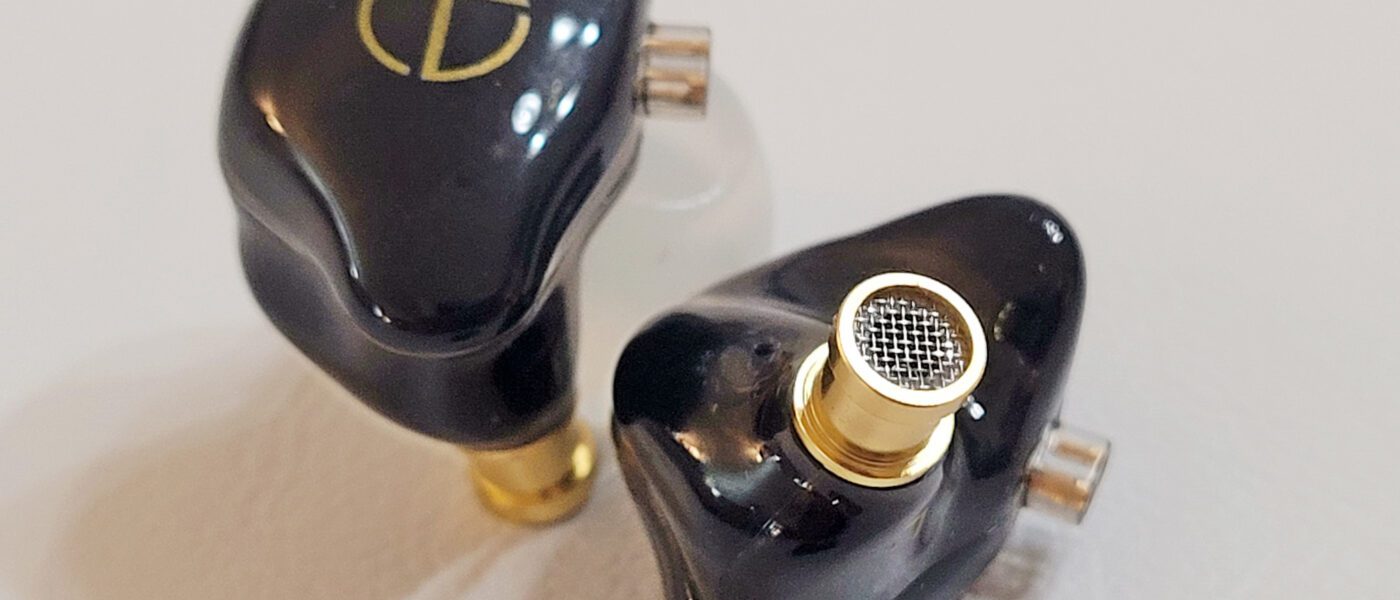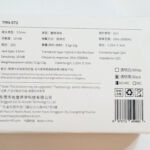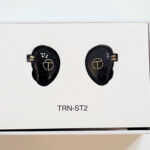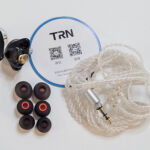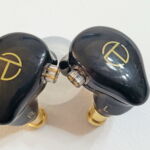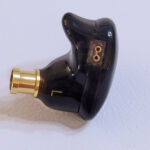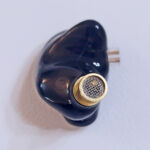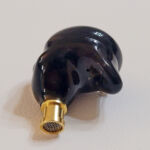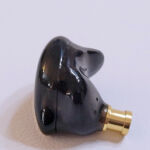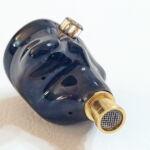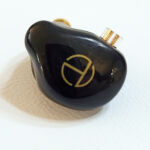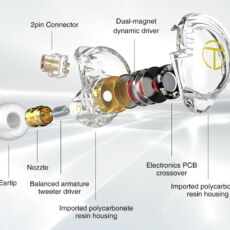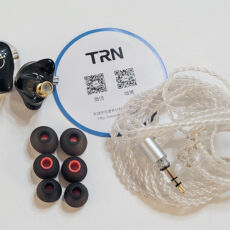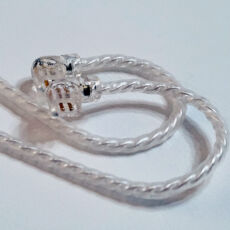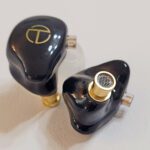TRN ST2
disclaimer: I purchased the ST2 with the promise of reimbursement from the vendor offering it. I then forgot which vendor it was and as such purchased the ST2 outright. I have no financial interest in TRN or any of its partners. If you wish to purchase an ST2, I got my pair through Amazon.
Unboxing / Packaging:
The ST2 packaging is fairly standard now for budget models. White box with drawing showing internals on the front, specs on the reverse. Inside we find the earpieces in a foam tray with the cable, tips, and cable tie hiding in the compartment beneath them. Three sizes of tips are provided but no foams, case, or other accessories are found in the package. This is an extreme budget proposition and retails for less than $15 on Aliexpress so one shouldn’t have an expectation of such items.
Build/Fit:
The ST2 uses the inverted teardrop shape with nozzles exiting the lowest point with a slight forward rake. Shells are three parts with a translucent black resin outer and inner shell and a brass nozzle. There are two vents on the inner shell one immediately adjacent to the nozzle and another at the mid-point of the trough. No external vents are present and isolation is fairly good as a result. Size is medium so fitment issues should be unlikely. Overall, construction is solid with no slop, glue, or gaps.
Internals:
The ST2 is a hybrid consisting of a single 10mm dual magnet dynamic driver and a 30095 balanced armature. This is a fairly classic combination and has been found in more than a few in-ear models over the years. The dynamic driver gives lows more impact than a typical armature can and the 30095 provides a lot more top end than most dynamic drivers can handle. the trick here is the 30095 is capable of getting quite hot and bright and is often associated with treble fatigue so careful tuning is needed to rein that in. The ST2 does use an electronic cross-over so some additional tuning tricks are available to it. Depending on which reference you read, nominal impedance is either 22Ω or 30Ω with my tests falling closer to the lower (24.7Ω). Sensitivity is listed at 107dB/mW and unlike the impedance here all the materials seem to be in agreement. I found the ST2 easy to drive using a phone/dongle or tablet and while it scaled a little, more potent sources are really not necessary for the ST2 to do its best work.
Cable:
The cable again is pretty standard fare for a budget model with a 90º 3.5mm jack in a brushed metal housing, a 4 wire double twist cable from jack to clear plastic Y splitter and then two tight twists exit and head to pre-formed hooks and 0.78mm hooded bi-pin connectors. There is no chin slider provided and while my sample does not have a microphone, the option for one exists for those that prefer one. A Velcro cable tie is provided for storage and I found the cable was pliable enough to not retain a memory when coiled for multiple days.
Sound:
Bass:
There is a sub-bass emphasis centered at 60Hz that then gradually drops back as we move up but remains a prominent feature of the soundscape for its entire range. The bass is fairly tight throughout the range with good slam and rumble. Bass has more texture than I expected in a super-budget model and while there is some mid-bass bleed, it isn’t enough to obscure the lower mids or make the ST2 sound overly thick. I found that even with busy tracks the bass stayed fairly clean and didn’t have the compression issues often found in super-budget models. Overall, TRN got the bass right. There is enough of it to have authority but not enough to get sloppy or out of place.
Mids:
Here we hit the Jekyll and Hyde nature of the ST2 full on. The lower mids have nice tonality with good note weight and give male vocals a natural tone. Unfortunately, the further we move up, the more forward and shouty the mids get. Guitar tones in the lower registers are good while higher tones become over-emphasized and brittle as a result. Strings suffer much that same fate with the lower voices sounding more natural than the upper voices. Female vocals are at least a full step in front of the rest of the mix due to the tuning and the are prone to sibilance. There is an odd dichotomy to duets where one voice is relaxed and natural and the other is harsh and over-aggressive. As mentioned earlier the 30095 driver has built a reputation for this and the ST2 does little to change that.
Treble:
The treble continues what began in the mids with the lower treble sharing the same exaggeration of the upper-mids before dropping back a bit once you reach into the 6-7kHz range. This gives them a lot of lower treble energy which may expose detail but also can make them a very fatiguing listen. Snare rattle is very sharp edged and crisp, but that same energy gives cymbals a metallic click rather than a true sound. The upside is the ST2 does have an airy and open top end with good extension and no audible roll-off until above the limits of my hearing (roughly 14kHZ).
Soundstage / Imaging:
Stage is pretty typical for budget in-ears. Wider than deep by a considerable margin with limited height. Seating the orchestra has them a bit more spread out than is natural but instrument separation is good enough to prevent any major overlaps in spite of the lack of stage depth. Layering is acceptably good as well with compression less of an issue until extremes are reached. Imaging is reasonably good with movements easily tracked and fairly precise but with a bit of a donut hole in the center front where movements are less defined.
Thoughts / Conclusion:
The ST2 is a pretty polarizing listen. Good bass for a budget model for sure, but the top end makes it a harsh listen and unfortunately distracts from the solid base (pun intended) that TRN built for it. Physically, the ST2 is mid-sized and well shaped for comfort for long wear, but for me the upper-mids keep me from listening for extended periods due to fatigue. The 30095 has a reputation for producing shouty, aggressive treble and the ST2 does little to change that reputation as its upper-mids and lower-treble very solidly dominate the rest of the signature and hurt what was a promising start.
-
Bass - 7/107/10
-
Mids - 5/105/10
-
Treble - 5/105/10
-
Soundstage - 6.5/106.5/10
-
Imaging - 6.5/106.5/10
Summary
Pros: Comfortable fit, great price, good lows
Cons: splashy upper-mids and lower treble, fatiguing

